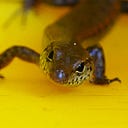Member-only story
King Henry VIII and the Spoonbill
The fall and rise of an unusual bird

‘Diett for the King’s Majesty and the Queen’s Grace’
Thirty species of wild bird were available to the kitchens of Henry VIII. They ranged from sparrows, larks and lapwings (all sold by the dozen) to swans, cranes and bustards. The king had a choice of oystercatchers, grey plovers, widgeons, teals and mallards, three types of gulls, and a broad selection of larger birds. He ate fowl for dinner and supper, except on fish days when the palace tables were crowded with herrings, eels, lampreys, salmon, sturgeon, haddock, plaice, gurnard, pike, perch, tench, crabs, lobsters…and porpoise and seal. The king did not suffer a gastronomic monoculture.
Among the long list of wildfowl destined for the royal table were ‘shovelards’ (Eurasian Spoonbill, Platalea leucorodia), purchased at 20 pence a piece from William Gurley, ‘Purveyor of Poultry for our Soveraigne Lord the King’, and Thomas Hewyt, who provided ‘all kindes of Wildefoule’. Shovelards were the same price as herons and byttornes (bitterns), but less than half the price of heftier swannes, cranes, storkes and bustards. They were served at both dinner (midday) and supper (early evening) in either the first or second course.
